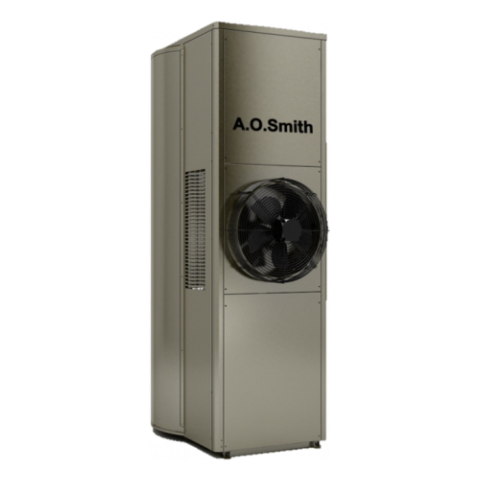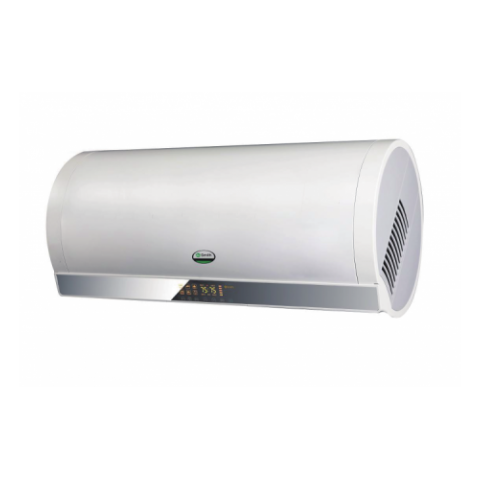Solar is a Big word. Imagine free energy.
But before we get confused, let's clear up which solar we're talking about. There are two kinds: solar photovoltaic for electricity and solar thermal for water heating. Solar photovoltaic is nearing mass appeal so we'll get back to this in the end. But for now, let's check out Solar thermal. This should be effective, right?
It's free hot water!
Actually, it might not work as well as you expect it. Solar needs direct sunlight. And that's not available at night. So half the time, you don't have solar energy. And you only get that on clear sunny days, which is not every day either. We get cloudy and rainy days a lot in the Philippines. So what does that give us? Less than 25% of the time? It's even worse.
You see, heat energy from the sun is absorbed the most when the solar collector is perpendicular to the sun rays. There is a tiny range of angle where solar energy is absorbed by a flat solar surface. That is about 2-3 hours of day time only.
There is a solution to that: evacuated tubes (set of cylindrical collectors). Whatever the angle of the sun rays versus the collector, the light beam will hit the collector perpendicularly. BUT there is a catch, you will have less overall collector surface area because you need space in between the tubes. So for the same space, you catch energy more efficiently and more evenly throughout the day, but you still catch less since you have less collector area.
So what do we get? Say 4 hours of day time. That's just 33% of day time. 33% of 25% is about 8-9 % of the year.
Backup Secondary Heating for Solar Water Heaters
So what to do? We need a backup plan. This plan usually has to do with electricity. When the day is cloudy or rainy, we get our hot water by running on heating elements in the tank.
It's good we only need to run them when it's that time of the year, right? Well, we need to understand how centralized heaters work in general.
Centralized storage heaters
Storage heaters don't heat water when you need them. Otherwise, solar will not work -- we can't magically demand the sun to give us energy. (The electric elements will be more than happy to oblige however.)
Storage heaters maintain hot water in their storage. They run on thermostats. When the water is not hot enough anymore, the thermostat will call for hot water from the collector or by energizing the heating element. While the water is hot, the heater will rest, conserving as much of the energy as much as possible through its (hopefully thick) insulation.
Given this, the storage heater will most likely call for heat when the temperature of the water inside is going down. When does that happen?
When do you take a bath?
If you're like most people, it's usually early in the morning and/or at night. So, we use hot water most in those times of the day.
If there are more of you in the house, you use more hot water. As you use it, the tank temperature goes down. And sooner or later the storage heater will call for heat. Now what time is it? Day time, weak sun. Night time, no sun. So electricity to the rescue!
So in the end, solar heater will save you a bit in terms of energy, but it probably wouldn't be as free as you imagined (or as much as the solar heater salesperson told you).
There must be a better way? I'm glad you asked.
Heat Pump + Storage Heater = Hybrid Heaters Heart Earth
Although A.O. Smith also have solar water heaters, we understand their limitations and recommend heat pump heaters as a better solution for the Philippines.
Heat pumps are rather similar to our refrigerators and air conditioners, only in reverse. Their job is to pump the heat from one place to another. In our case, it is from the air and move it to water. A typical heat pump can move 2-5 times the heat as the energy it took to transfer that heat. What's beautiful with this is, that in a tropical country like the Philippines, where we don't have winter and humidity is high, heat pumps work just better 100% of the year. That means it works well day or night, cloudy, sunny, or rainy.
While heat pumps are most efficient at higher ambient temperatures, they can still get heat at 10 degrees Celsius. This means they can work even in Baguio and Tagaytay.
When the typical electric heater in the Philippines range from 2 kw to 6kw, heat pump kilowatt ranges from 200W to 1.25kW. It saves so much energy that since 2005, most 4-5 star hotels have moved from boilers or gas heaters to heat pumps to reliably provide good hot water for guests.
So what's the downside? Well, like AC, you need to clean their filters from time to time. And of course they use electricity. So if you are in areas with no good electricity, you can't use them. Unless, maybe if you can get electricity from the sun!
Solar photovoltaic
If you're building a new home, solar photovoltaic is clearly something you must look at. It can save you a lot of energy every day. And if your home is in a remote place with no electricity, you'll want batteries to come with it. Unless it's earth hour every night.
In any case, solar is still expensive, so you will want to use the energy wisely. A typical AC is between 1 to 3hp. A typical heater is between 2 - 6kw. When you convert the units, the smallest instant heaters are more energy intensive than most home ACs. (But of course, we don't take showers for 8 hours like we do AC during our beauty sleep.) So when you are building your earth friendly dream home, it is a good idea to use hybrid heaters compared to traditional water heaters.
So there you have it. Hybrid heaters are the best heaters you can invest on. They have clear advantages over solar heaters. And they will make it up with lower energy costs. And you get to contribute to a better environment.
Bonus
Q: If a heat pump moves the heat out of the air and to the water, what happens to the air?
A: It becomes cooler. Some homes use this to great effect by diverting the cool air to hallways or the maids room. So it is sort of like free AC too!




